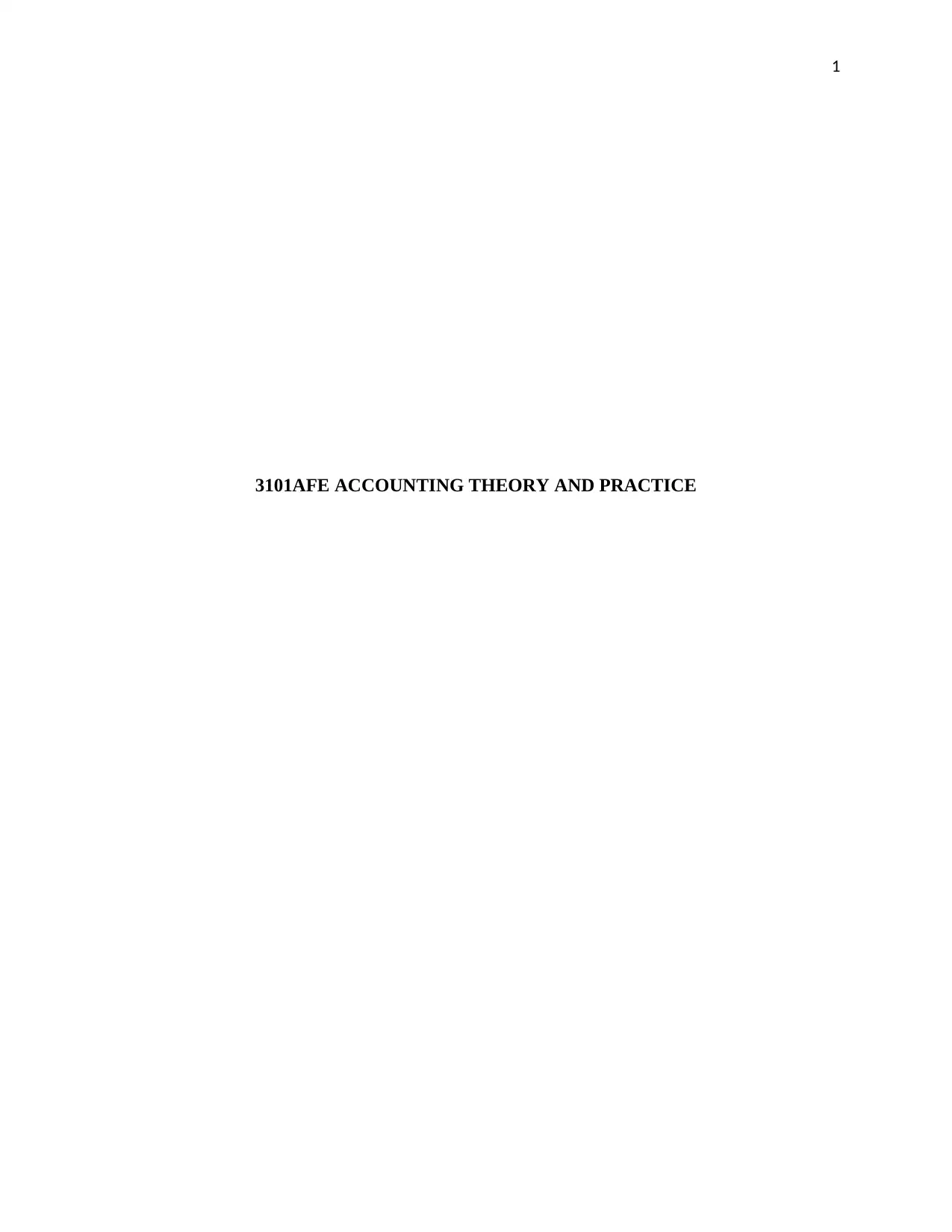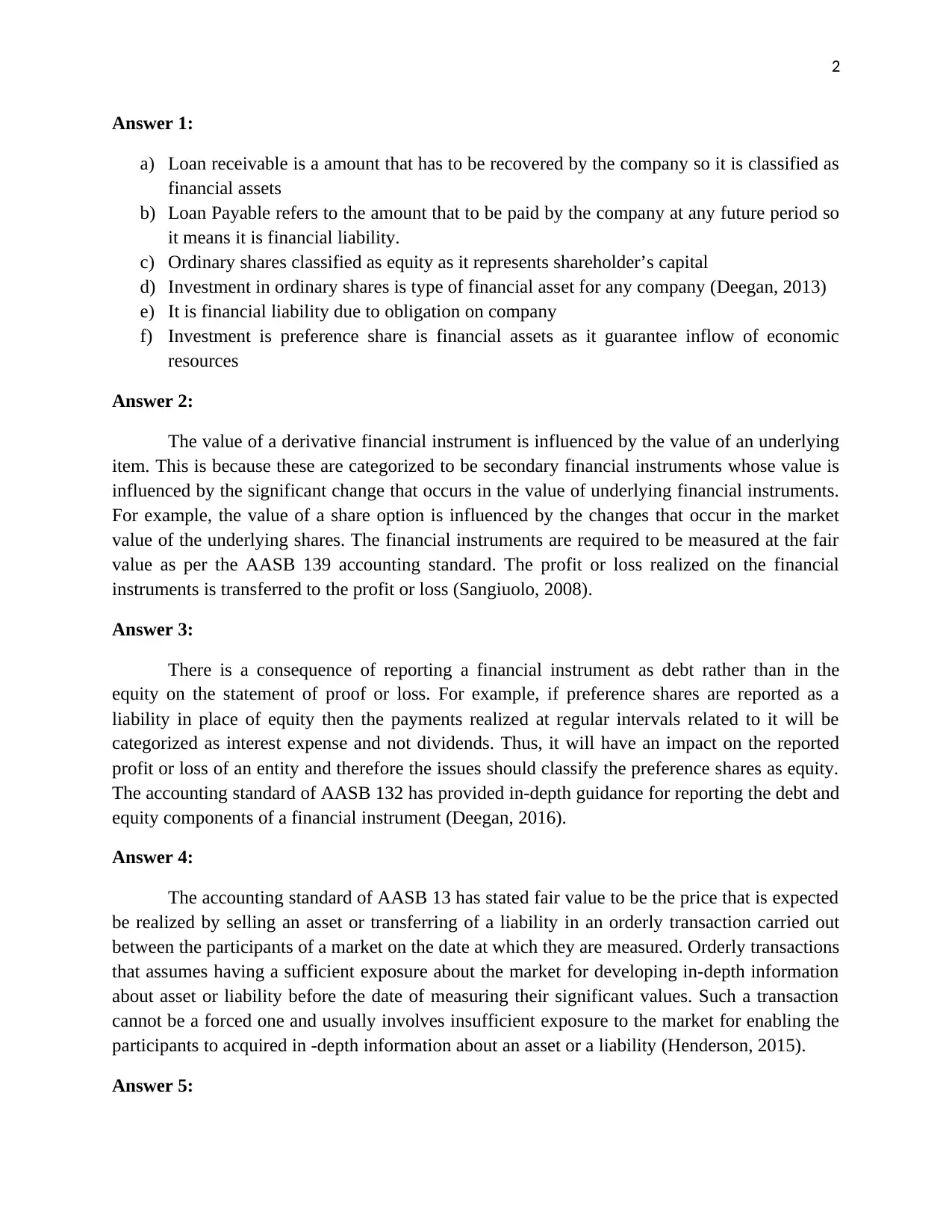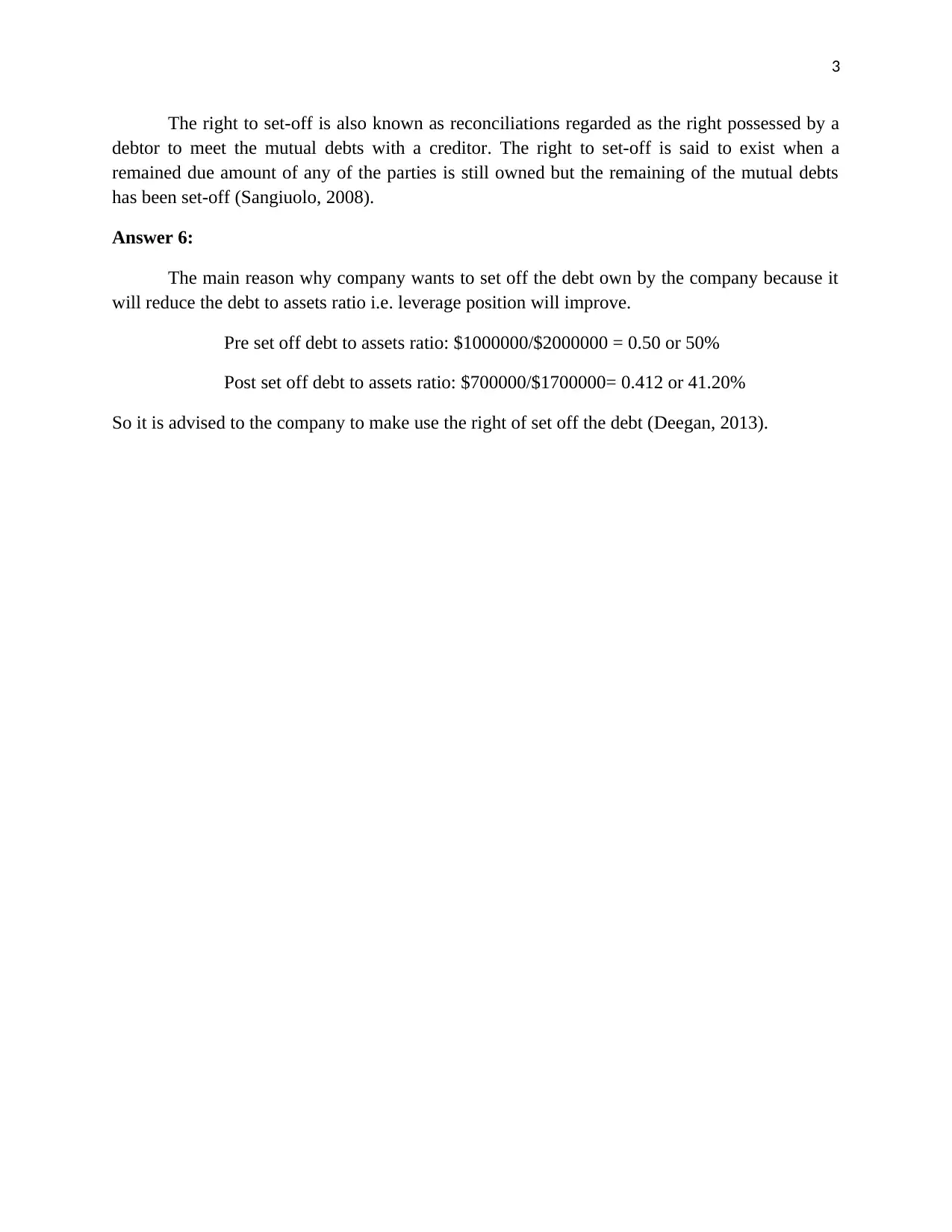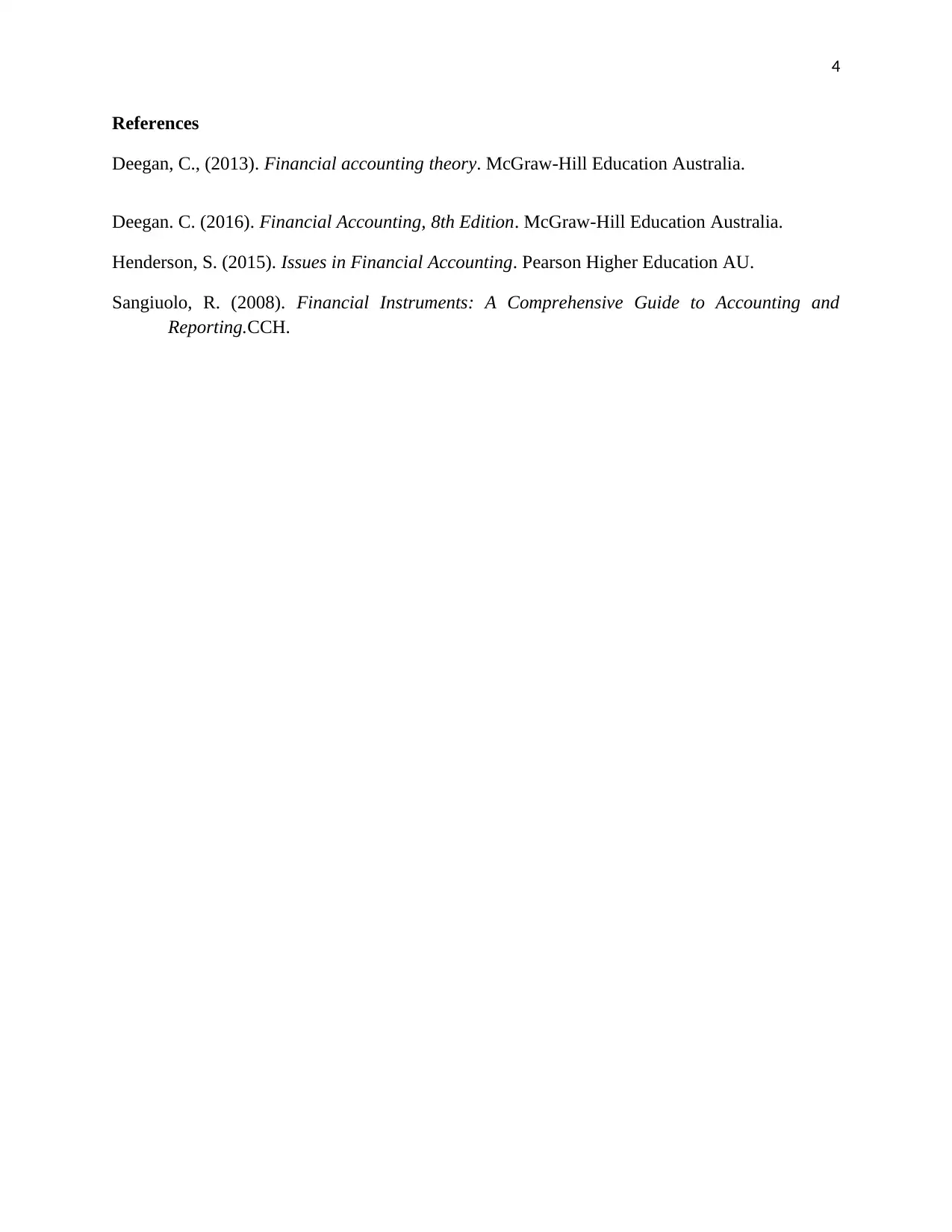Comprehensive Solution to 3101AFE Accounting Theory Homework
VerifiedAdded on 2023/06/04
|4
|697
|425
Homework Assignment
AI Summary
This assignment provides solutions to several questions related to accounting theory and practice, covering topics such as the classification of financial instruments (loan receivable, loan payable, ordinary shares, etc.), the valuation of derivative financial instruments according to AASB 139, and the consequences of misclassifying financial instruments as debt versus equity. It also discusses the definition of fair value as per AASB 13, the right to set-off mutual debts, and the reasons why a company might want to exercise this right to improve its leverage position. The solutions are supported by references to relevant accounting standards and textbooks, including Deegan (2013, 2016), Henderson (2015), and Sangiuolo (2008). Desklib offers a wide range of solved assignments and past papers for students.
1 out of 4











![[object Object]](/_next/static/media/star-bottom.7253800d.svg)